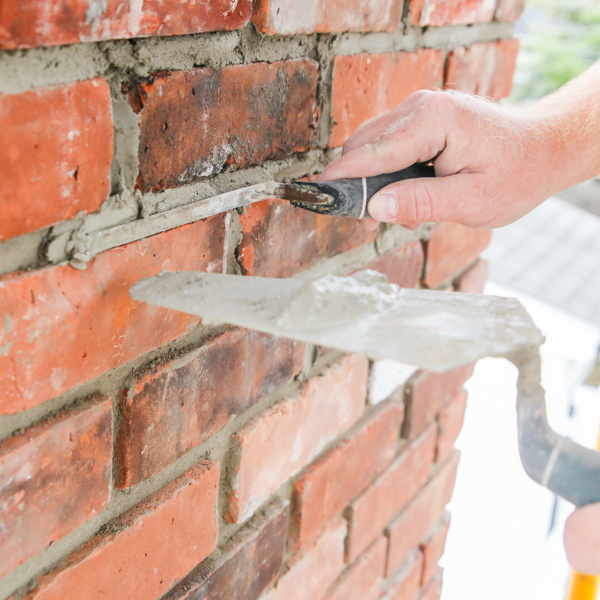Unlocking the Secrets of Sustainable Stonework Construction Practices for Eco-Friendly Structures
In the world of contemporary construction, the quest of sustainable techniques has actually become extremely important. Amongst the myriad approaches to environment-friendly structure, sustainable stonework building and construction stands apart as a reliable and long lasting method that holds a wealth of untapped potential. From the option of materials to ingenious construction techniques, the tricks to achieving sustainability within stonework building are diverse and interesting. By exploring the advantages, materials, strategies, and future trends of sustainable stonework, a much deeper understanding of exactly how these practices can form the future of environment-friendly buildings arises.
Advantages of Sustainable Masonry Building
Welcoming sustainable masonry building and construction techniques not just minimizes ecological impact but also offers long-lasting financial benefits to builders and communities. By using products like recycled bricks, blocks, and stones, contractors can dramatically decrease the carbon impact of their projects while promoting source effectiveness. In addition, lasting masonry construction methods, such as appropriate insulation and thermal mass residential properties, can boost energy efficiency within structures, leading to lowered functional expenses in time.
Moreover, the resilience and resilience of stonework structures add to long-term economic advantages. Structures created using lasting stonework practices frequently require much less repair and maintenance, equating to set you back financial savings for contractors and residential or commercial property proprietors. The long life of stonework products additionally ensures that structures remain secure and protected, minimizing the need for frequent restorations or replacements.
Eco-Friendly Stonework Materials
Making use of environment-friendly masonry materials is an essential action towards boosting the sustainability of construction methods and minimizing environmental influence while taking full advantage of lasting economic benefits. Sustainable stonework materials are sourced, produced, and made use of in a manner that decreases overall environmental effect. Sustainable concrete blocks include recycled accumulations and might feature better insulation residential properties, adding to energy effectiveness in structures.
Furthermore, natural materials like adobe, rammed earth, and straw bales supply outstanding thermal mass residential properties, decreasing the need for home heating and cooling down power. These materials are frequently locally offered, promoting regional economic climates and minimizing transportation-related carbon discharges. By choosing environment-friendly masonry materials, construction tasks can considerably decrease their environmental footprint and add to the creation of healthier, a lot more lasting built atmospheres.
Energy-Efficient Masonry Methods
Energy effectiveness plays an important function in enhancing the sustainability of masonry building practices. By executing energy-efficient stonework methods, building check it out contractors can significantly lower the overall power usage of a building, leading to reduced functional expenses and a smaller ecological footprint. One essential energy-efficient stonework method is the use of thermal mass, which includes incorporating thick materials like concrete or block into the building's structure to absorb and keep warmth. This aids control indoor temperatures, lowering the need for mechanical heating and cooling systems.

Innovations in Lasting Masonry
Recent innovations in sustainable masonry practices have actually produced ingenious strategies that are reshaping the building industry. One such advancement is the growth of self-healing concrete, which uses microorganisms installed within the concrete to heal cracks autonomously. This innovation not only reduces maintenance expenses however likewise enhances the longevity additional resources of stonework frameworks, contributing to their sustainability.
Another noteworthy development is making use of recycled aggregates in stonework building and construction - masonry contractor. By incorporating materials such as crushed ceramic waste or recycled glass right into concrete blends, building contractors can reduce the ecological effect of building and construction jobs while maintaining structural stability. This method not just draws away waste from landfills but likewise preserves natural resources, making it an essential development in sustainable stonework building and construction
Furthermore, the integration of digital design devices, such as Building Info Modeling (BIM), is revolutionizing the way masonry structures are planned and constructed. BIM enables visit this site for more specific estimations, lowered product waste, and improved energy effectiveness, eventually bring about even more lasting structure methods. These developments collectively signify an encouraging future for sustainable stonework building and construction in the period of environment-friendly structures.
Future Trends in Masonry Sustainability
With the cutting-edge strides made in lasting stonework practices, the future patterns in stonework sustainability are positioned to further revolutionize the construction market. One of the crucial fads shaping the future of masonry sustainability is the enhanced integration of innovation. Innovations such as Structure Info Modeling (BIM) and online reality simulations are being utilized to maximize stonework building and construction processes, leading to minimized product waste and improved energy performance in structures.
Furthermore, the development of novel lasting products is readied to play a considerable role in enhancing the eco-friendliness of masonry building. masonry contractor. Technologies like self-healing concrete, recycled aggregates, and bio-based binders are obtaining traction for their ability to decrease ecological effect while keeping structural integrity

Final Thought
To conclude, sustainable masonry building methods offer many benefits for green buildings. By utilizing green materials and energy-efficient techniques, masonry can add to an extra sustainable built atmosphere. Innovations in lasting stonework are constantly being established to even more boost the ecological efficiency of structures. Looking towards the future, the trend of stonework sustainability is anticipated to grow, bring about more eco-friendly and energy-efficient construction practices in the years ahead.